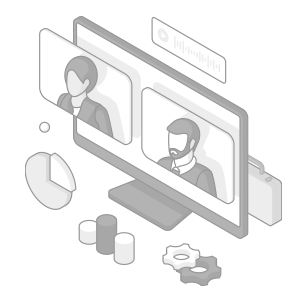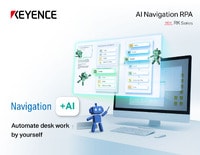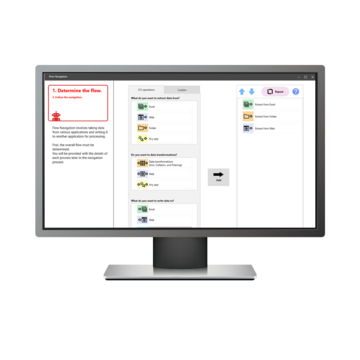RPA (Robotic Process Automation)
OSG CORPORATION CO.,LTD.

The greatest appeal of RK lies in its ability to clearly demonstrate results proportional to effort. Currently, more than 20 employees are motivated and actively engaged in automation, achieving a monthly reduction of over 700 hours in work hours!
At OSG Corporation, we introduced KEYENCE’s RPA (Robotic Process Automation) tool, RK, to enhance productivity in our management departments. This has resulted in a reduction of over 700 hours of work each month. To learn more about the background of RK’s implementation, its effects, and tips for effective utilization, we interviewed Takuya Otani, Head of the Information Management Department and a key advocate for RK, as well as Yoshie Yoshimura, Section Chief of the Purchasing Department, who has successfully improved numerous processes using RK.
About the Company
OSG CORPORATION CO.,LTD.
Founded in Augustof 1970, OSG Corporation is a manufacturer of functional water. The provide a wide range of water-related equipment—from beverages and cooking to hygiene management, even including households, industries, and businesses across Japan and overseas. In 2018, they launched the “Ginza Nishikawa” bread specialty store as part of their initiative to promote “water as food”. This achieved great success, and has been expanded into China, Taiwan, and the United States.
We’re here to provide you with more details.
Reach out today!

Over 180 Automation Scenarios Running Daily!
Please Tell Us About Your RK Utilization
Currently, we have 180 scenarios (automation programs) in production. Examples include:
- Downloading data and notifying via internal chat
- Transferring data between Excel sheets
- Inputting data into sales management systems
- Data processing and report generation
Most scenarios are scheduled to run on dedicated RK computers by frontline staff in departments such as Purchasing, Operations, and Accounting. However there are scenarios that are ran ad-hoc and are manually executed by developers.
We hold one license each for the “creator license” (for development of new scenarios) and the “runner license” (for execution of scenarios on dedicated RK PCs).
The creator licenses are shared among developers who reserve their slots. With over 20 employees capable of developing scenarios, competition for these licenses has become quite active.
The Key to Adoption: Small-Scale No-Code Development by Frontline Staff
What Prompted Your Decision to Implement RK?
As a manufacturer, improving productivity has always been a core theme for us. Discussions with our banking partners often touch on productivity topics—such as choosing gas suppliers or reducing rent. One day, we were asked, “Are you considering or implementing RPA?” which was our initial introduction to the concept.
Around that time, a young employee from the Information Management Department reported seeing various RPA automation tools at trade shows. This prompted us to explore the possibility of adopting RPA.
We gathered information on multiple RPA tools, including RK, and reviewed materials. Ultimately, we decided to implement RK for the following reasons:
- Small-Scale Start: The ability to start with just one license was very unique. It suited our desire to quickly test and implement on a small scale.
- Support for Continuous Assistance: The “Partner Support” service, which provides thorough support from dedicated staff, was a significant factor. We believed that with such support, our approach of “partial optimization” could be effectively realized.
What Is “Partial Optimization”?
We define “partial optimization” as the idea that “business improvements are carried out by the employees responsible for those tasks,” because they know their work best. In the context of RK, this means frontline employees automate their own tasks. This approach not only enhances efficiency but also helps employees develop their skills with automation.
However, if the tools are too complex, this becomes difficult. RK’s no-code development capability and the support available made us believe that “partial optimization” could be easily achieved with RK.
Achieving Over 700 Hours of Monthly Time Savings!
As Mentioned Earlier, With Over 180 Scenarios Running, What Benefits Have You Observed?
We have realized:
- Reduced Work Hours: Last year, we achieved a reduction of 700 hours per month, and this year, we aim to cut an additional 800 hours, totaling approximately 1,500 hours saved. Employees who successfully automated their tasks have experienced significantly less overtime, enabling earlier departures or reallocating time to more productive activities.
- Enhanced Work Quality: The overall quality of work has improved. Tasks that were previously time-consuming and labor-intensive, such as “checking all outstanding orders,” are now manageable thanks to RK. This has allowed us to process tasks quicker and with fewer errors.
- Process Review: Creating scenarios with RK requires inventorying and understanding all tasks to be automated. This process often reveals unnecessary tasks. For example, we once realized that “saving approval emails from supervisors” could be eliminated by having supervisors directly record approval statuses, leading to the task’s removal.
Are There Any Other Secondary Benefits?
Automating data entry and transfer to Excel or sales systems has freed frontline staff from tedious work, reducing stress and improving job satisfaction.
Additionally, developing RK scenarios has fostered cross-departmental communication, as employees exchange ideas like “If you’re doing this task, you can automate it with RK.” This has deepened understanding of other departments’ work and improved internal communication, which we see as a positive outcome of RK adoption.
How to Cultivate Over 20 Employees as RK Developers
With Over 20 Employees Capable of Developing Scenarios, Most of Whom Are Frontline Staff in Management Departments, What Are the Keys to Successful Internal Dissemination?
To promote RK internally, we focus on three main strategies: “making it part of performance evaluation,” “creating successful examples first,” and “establishing an easy-to-use system.”
- Incorporate into Performance Evaluation: Currently, “proficiency in RK” is a required skill for management department staff. We emphasize that mastering RK and improving processes can positively influence evaluations, bonuses, and even enable more time off or earlier departures, encouraging proactive engagement.
- Create Success Stories First: Employees who significantly reduce overtime using RK serve as motivation for others. We first encourage the operations department, where many tasks are repetitive and automatable, to adopt RK. Sharing their successes with others has greatly facilitated continued internal adoption.
- Build a User-Friendly System: We also ensure that the environment makes RK easier to use. For example, we hold study sessions for beginners, regularly review usage during progress meetings, and share scenario files via chat notifications. These follow-ups help maintain momentum.
Furthermore, RK’s ability to produce visible results quickly is a major factor in its internal acceptance. Unlike system tools that are often invisible in their usefulness, RK clearly shows the outcomes of efforts, such as time savings and quality improvements, which motivates staff to continue using it.
The Key to Smooth RK Implementation: Clarifying Work Procedures
What Types of Companies Are Best Suited for RK?
All companies can benefit, especially those with well-documented work procedures. In departments where procedures are only in employees’ heads, RK adoption was slower. Therefore, creating clear work instructions can be a catalyst for RK implementation across all organizations.
Any Tips for Developers to Master RK?
As with the work instructions, the first step is to write down your own tasks. Understand what tasks exist, how they are performed, and which parts can be automated with RK.
We believe there’s nothing RK cannot automate. If automation isn’t working well, it’s either because the work method is flawed or the scenario is incorrect. Treat RK like a “new employee”: if you teach it carefully and clearly, the automation you seek will surely be realized.
Future Outlook: All Employees as Dual-Role “Information Management Department” Members
What Are Your Future Plans?
Our immediate goal is to increase the number of active scenarios to 200 by FY2024, achieving a monthly work hour reduction of 800 hours. We plan to involve departments and company groups that have yet to adopt RK, building a comprehensive automation system and instituting a plan to instutue this technology long term.
Additionally, we aim to further enhance employee skills. The management department is currently in a transitional phase, moving toward the next era. Thirty years ago, when computers first appeared, all management staff had to acquire PC skills. Recently, tools like RK have emerged, enabling employees to perform programming-like tasks without coding.
All our employees’ business cards carry the title “Product Planner Department,” symbolizing that “all employees are part of the Product Development Department.” Similarly, we hope to eventually have all employees’ business cards display “Information Management Department,” reflecting their growth and versatility.
KEYENCE’s partner support is unmatched in speed and quality of advice. We look forward to continued support and, if possible, proposals that look beyond RK to future innovations.
Contact us to learn more about how our advanced technology can help take your business to the next level.
Contact Us
Related Downloads
Related Products
Scroll



